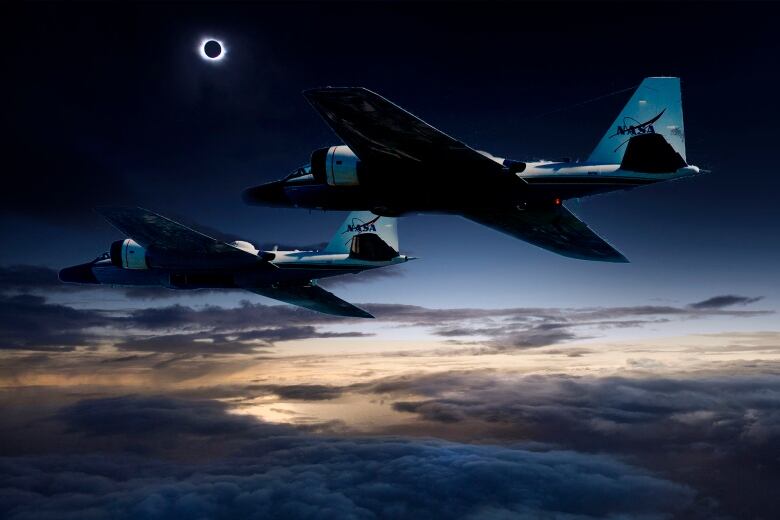NASA scientists will chase solar eclipse in jets
Scientists will follow the shadow of the moon in two retrofitted WB-57F jet planes
For armchair astronomers and nearly everyone else watching the skies during the total solar eclipse Aug. 21, it will all be over in 2 minutes.
But a team of NASA-funded scientists chasing the moon's shadow in retrofittedWB-57F jet planes will experience the rare phenomenon for more than seven extraordinary minutes.
A team led by Amir Caspi of the Southwest Research Institute in Boulder, Colo., will followthe darkness of the eclipse across the United States in two of NASA's research jets. The planes will take off fromHouston and cross over Missouri, Illinois and Tennessee.
Mounted on the noses of both planes will be telescopes aimed to capture theclearest images taken to date of the sun's outer atmosphere, known as the corona.

"These could well turn out to be the best ever observations of high frequency phenomena in the corona," Dan Seaton, co-investigator of the project and researcher at the University of Colorado in Boulder, said in a written statement.
- August total solar eclipse a boon for cities, businesses across parts of U.S.
- When day turns into night: Canadians, Americans prepare for total solar eclipse
"Extending the observing time and going to very high altitude might allow us to see a few events or track waves that would be essentially invisible in just two minutes of observations from the ground."
Rare opportunity
During a total solar eclipse, the moon completely blocks the sun, allowing the sun's corona to be seen in stark contrast to the surrounding darkness.
Scientists hope to untangle some of the mystery around why the outer layers of the sun's atmosphere are actually hotter than the layers closer to the sun.
Micro explosions on the sun's surface known as nanoflares could play a part in this puzzling phenomenon, and the eclipse offers a rare opportunity to observe them.
At the same time, the team expects to get thermal images of Mercury to find out how temperatures vary across the surface of theplanet closest to the sun.
NASA is funding 11 projects that will allow scientists to use the eclipseto learn about the sun and its relationship to the Earth's upper atmosphere.













_(720p).jpg)


 OFFICIAL HD MUSIC VIDEO.jpg)
.jpg)



























































































